Complete Solutions to Exercise 8.3 of chapter WORK, POWER & ENERGY of Class 11 book with complete answers and questions
| Class 11 | PHYSICS |
| Chapter | WORK, POWER & ENERGY |
| CENGAGE PHYSICS | Exercise 8.3 |
| Number Of Questions | 26 |
| Academic Year | 2023-24 |
Figure shows a light, inextensible string attached to a cart, which can slide along a frictionless horizontal rail aligned along the x axis. The left end of the string is pulled over a pulley of negligible mass and friction and fixed at height `h=3m` from the ground level. The cart slides from `x_1=3sqrt3m` to `x_2=4m` and during the move, tension in the string is kept constant at `50N`. Find the change in kinetic energy of the cart in joules. (Use `sqrt3=1.3`)
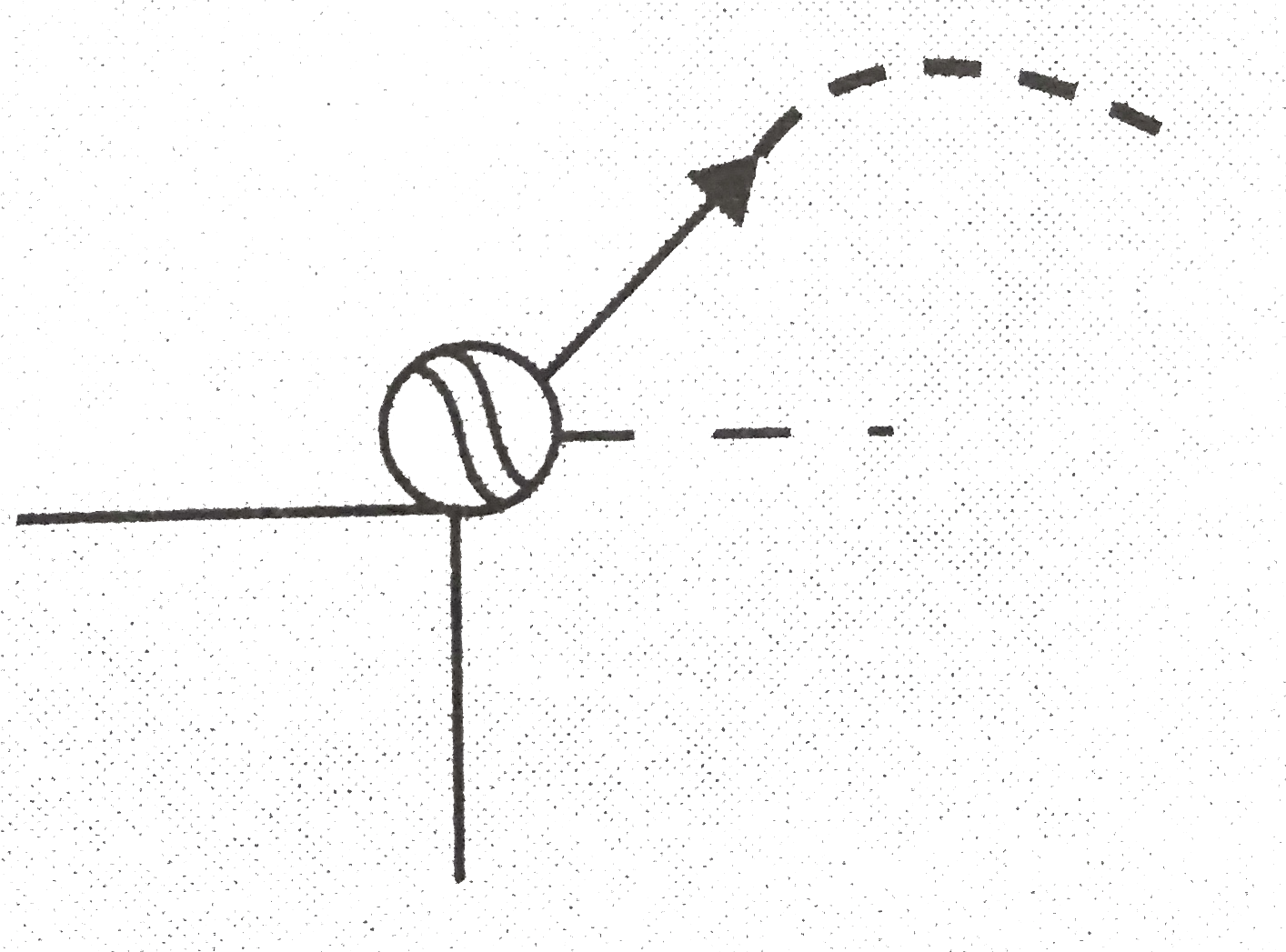 04:53View Solution
04:53View SolutionA boy throws a ball with initial velocity `u` at an angle of projection `theta` from a tower of height H.
Neglecting air resistance, find
a. How high above the building the ball rises
b. Its speed just before it hits the ground.04:05View SolutionAn elevatore is moving up with a constant velocity. Two different masses are attached to two different springs of same spring constant. Say you do two operations expanding the spring or compressing the spring by the same distance. Which operation consumes more energy: expanding the spring or compressing it?
04:21View SolutionConsider the two cases:
a. A says that the potential energy of a book placed on a shelf is `10J`.
b. B says that the potential energy of the same book is `-10J`.
Which one of them is wrong? Justify.02:33View SolutionConsider the two cases:
a. A says that the potential energy of a book placed on a shelf is `10J`.
b. B says that the potential energy of the same book is `-10J`.
Which one of them is wrong? Justify.02:33View SolutionA small block of mass 100 g is pressed again a horizontal spring fixed at one end to compress the sprign through 5.0 cm. The spring constant is 100 N/m. When released, the block moves hroizontally till it leaves the spring. Where will it hit the ground 2 m below the spring?
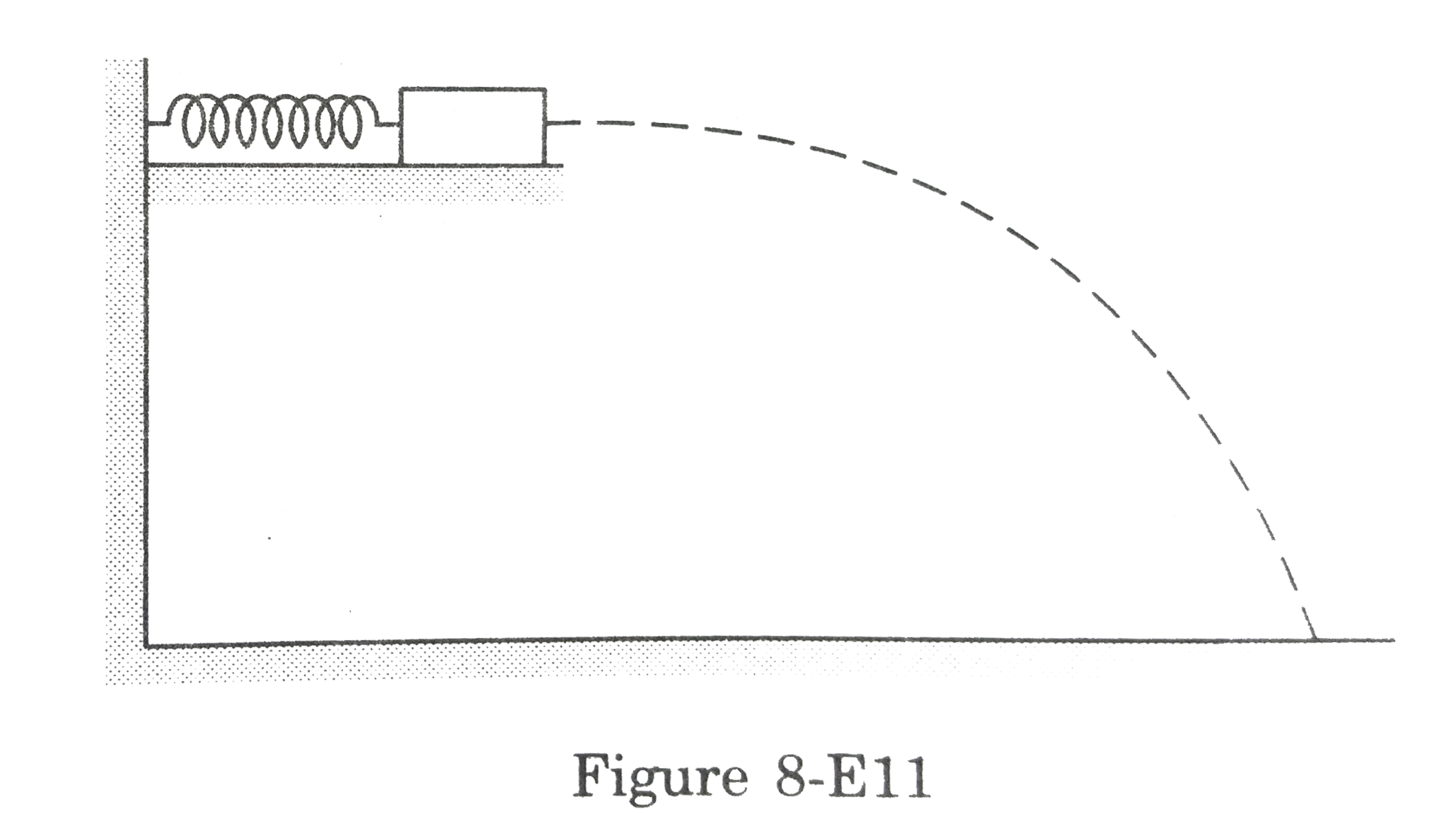 04:22View Solution
04:22View SolutionA rock of mass `m` is dropped to the ground from a height `h`. A second rock, with mass `2m`, is dropped from the same height. When the second rock strikes the ground, what is its kinetic energy? (a) Twice that of the first rock, (b) four times that of the first rock, (c) same as that of the first rock, (d) half as much as that of the first rock, (e) impossible to determine.
02:03View SolutionThree identical balls are thrown from the top of a building, all with the same initial speed. As shown in figure., the first ball is thrown horizontally, second above horizontal level, and third at an angle below the horizontal. Neglecting air resistance, rank the speeds of the balls at the instant each hits the ground.
 03:11View Solution
03:11View SolutionA lorry and a car moving with the same kinetic energy are brought to rest by the application of brakes which provides equal retarding forces. Which of them will come to rest in a shorter distance?
02:25View SolutionIn case of a moving body as force of friction is `mumg`, can we regard `mumgx` as potential energy similar to `mgh`?
01:55View SolutionA particle of mass `m=5.00kg` is released from point A and it slides on the frictionless track shown in figure. Determine (a) the particle's speed at points B and C and (b) the net work done by the gravitational force as the particle moves from A to C.
 05:39View Solution
05:39View SolutionTwo objects are connected by a light string passing over a light, frictionless pulley as shown in figure. The object of mass `5.00kg` is released from rest. Using the isolated system model, (a) determine the speed of the `3.00kg` object just as the `5.00-kg` object hits the ground, (b) find the maximum height to which the `3.00-kg` object rises.
 03:37View Solution
03:37View SolutionAt time `t`, the kinetic energy of a particle is `30.0J` and the potential energy of the system to which it belongs is `10.0J`. At some later time `t_f`, the kinetic energy of the particle is `18J`, what are the potential energy and the total energy at time `t_f`? If the potential energy of the system at time `t_3` is `5.00J`, are any non-conservative forces acting on the particle? Explain.
02:08View SolutionUnder the action of a force, a `2 kg` body moves such that its position x as a function of time is given by `x =(t^(3))/(3)` where x is in meter and t in second. The work done by the force in the first two seconds is .
02:58View SolutionA uniform rod of mass M and length L is held vertically upright on a horizontal surface as shown in figure. Assuming zero potential energy at the base of the rod, determine the potential energy of the rod.
 04:34View Solution
04:34View SolutionA uniform chain is just at rest over a rough horizontal table with its `(1)/(eta)th` part of length hanging verticaliy find the co-efficient of static friction between the chain and the table
 03:07View Solution
03:07View SolutionIn the figure, a block slides along a track from one level to a higher level, by moving through an intermediate valley. The track is frictionless until the block reaches the higher level. There a frictional force stops the block in a distance d. The block's initial speed `upsilon_(0)` in `6 m//s`, the height difference h is 1.1 m and the coefficient friction `mu` is 0.6. The value of d is `(g = 10 m//s^(2))`
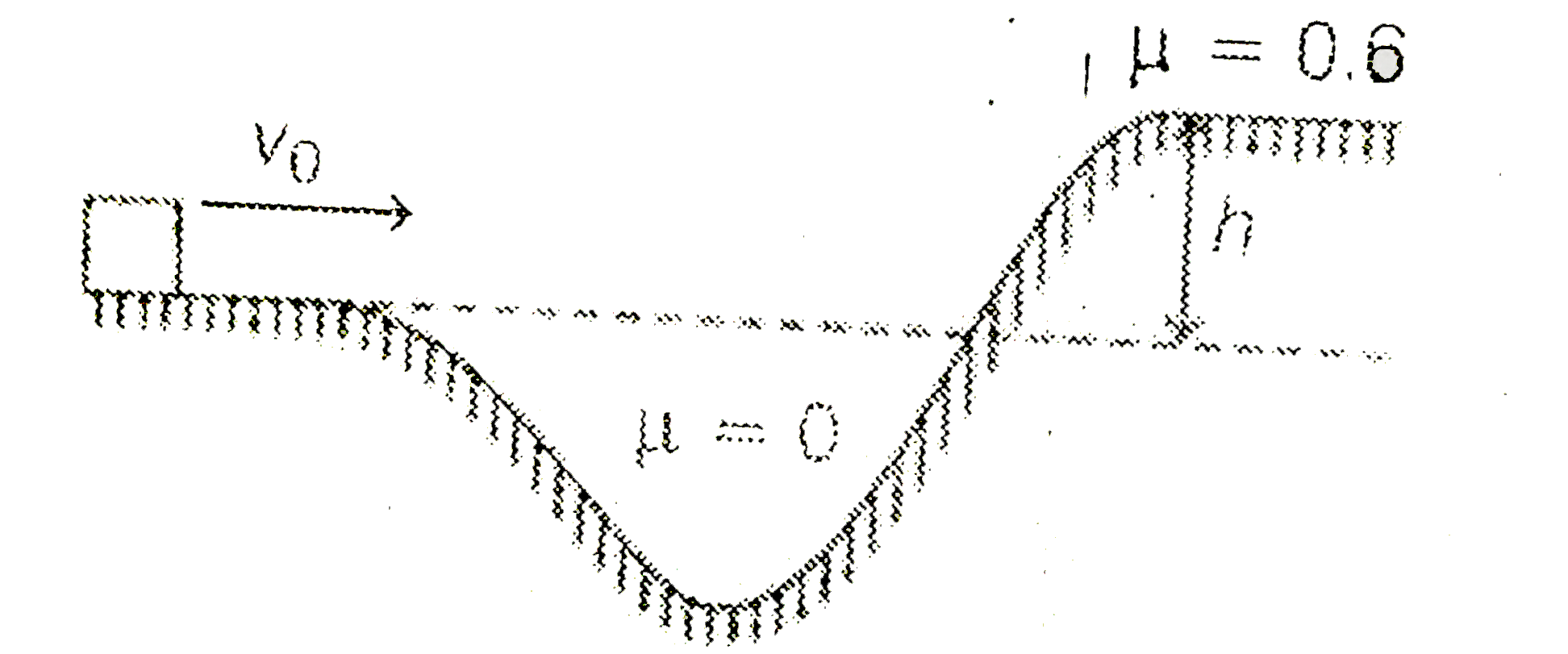 02:55View Solution
02:55View SolutionTwo smooth balls of mass `m_1` and `m_2` connected by a light inextensible string are at the opposite points of horizontal diameter of a smooth semi cylindrical surface of radius R. If `m_1` is released, find its speed at any angular distance `theta` moved by `m_2`.
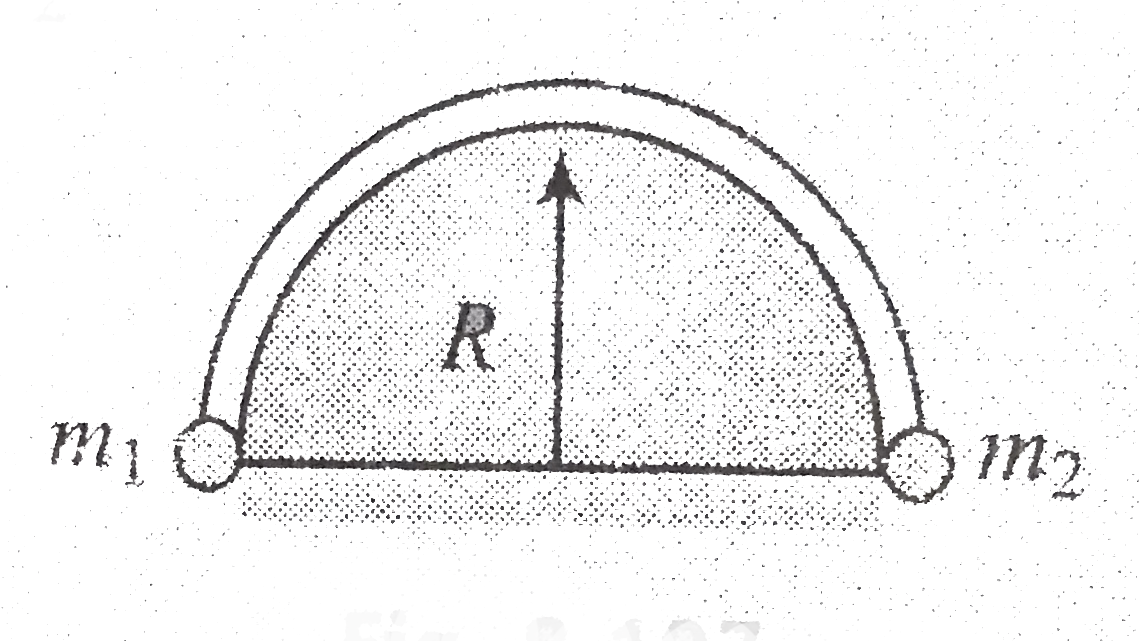 04:13View Solution
04:13View SolutionIn figure, an inextensible string that connects two bodies of mass M and `m`, passing over a fixed smooth pulley. The body M slides along a smooth vertical rigid bar. If the body M is released from the given position, find the maximum distance raised by body `m`.
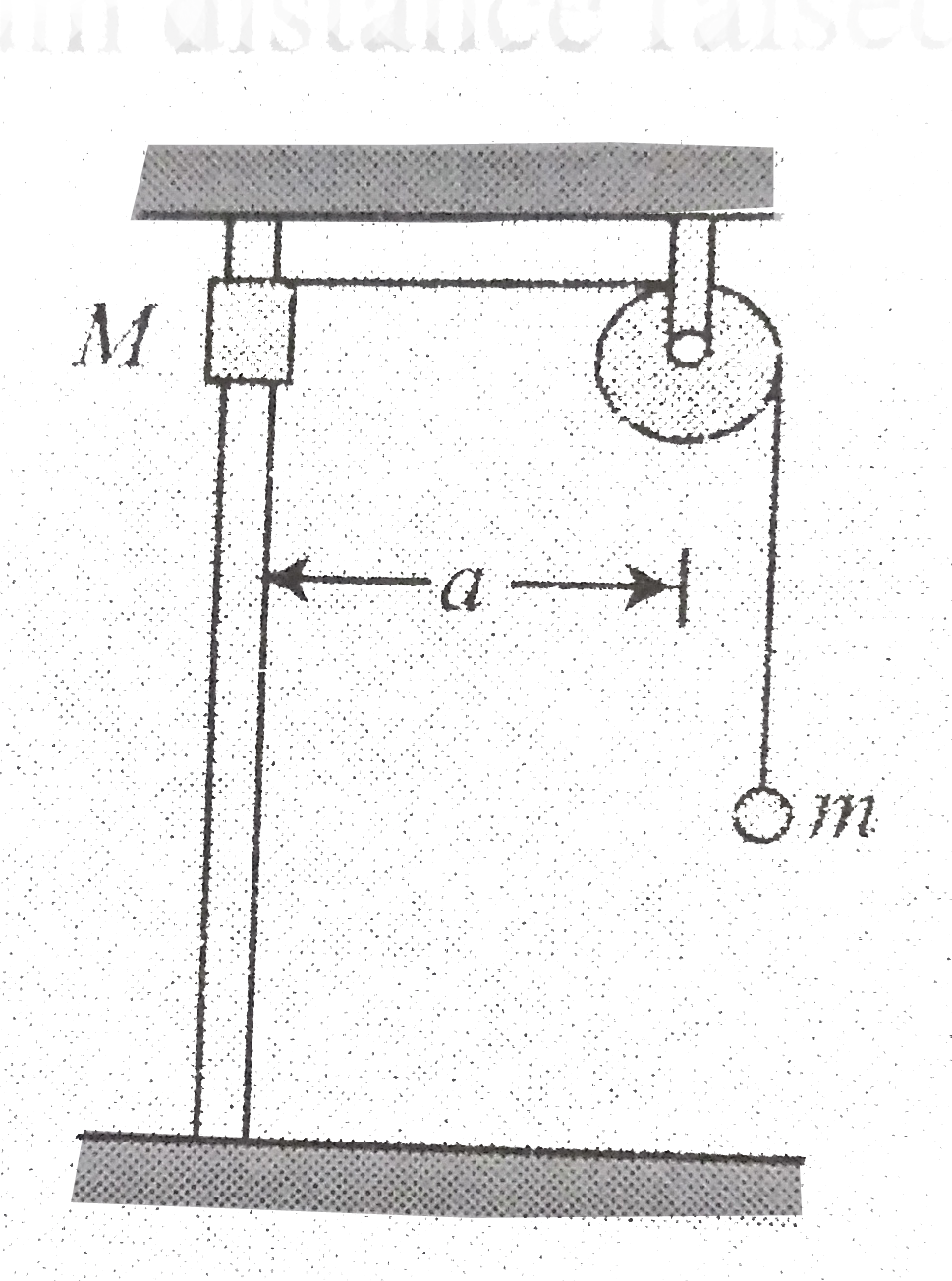 04:12View Solution
04:12View SolutionA block slides down a curved frictionless track and then up an inclined plane as in figure. The coefficient of kinetic friction between the block and incline is `mu_k`. Find the maximum height reached by the block.
 03:27View Solution
03:27View SolutionA child's pogo stick(figure) stores energy in a spring with a force constant of `2.5x10^4Nm`. At position (A) `(x_A=0.10m)`, the spring compression is a maximum and the child is momentarily at rest. At position (B) `(x_B=0)`, the spring is relaxed and the child is moving upward. At position (C), the child is again momentarily at rest at the top of the jump. The combined mass of child and pogo stick is `25kg`. (a) Calculate the total energy of the child-stick-earth system if both gravitational and elastic potential energies are zero for `x=0`. (b) Determine `x_C`. (c) Calculate the speed of the child at `x=0`. (d) Determine the value of x for which the kinetic energy of the system is a maximum. (e) Calculate the child's maximum upward speed.
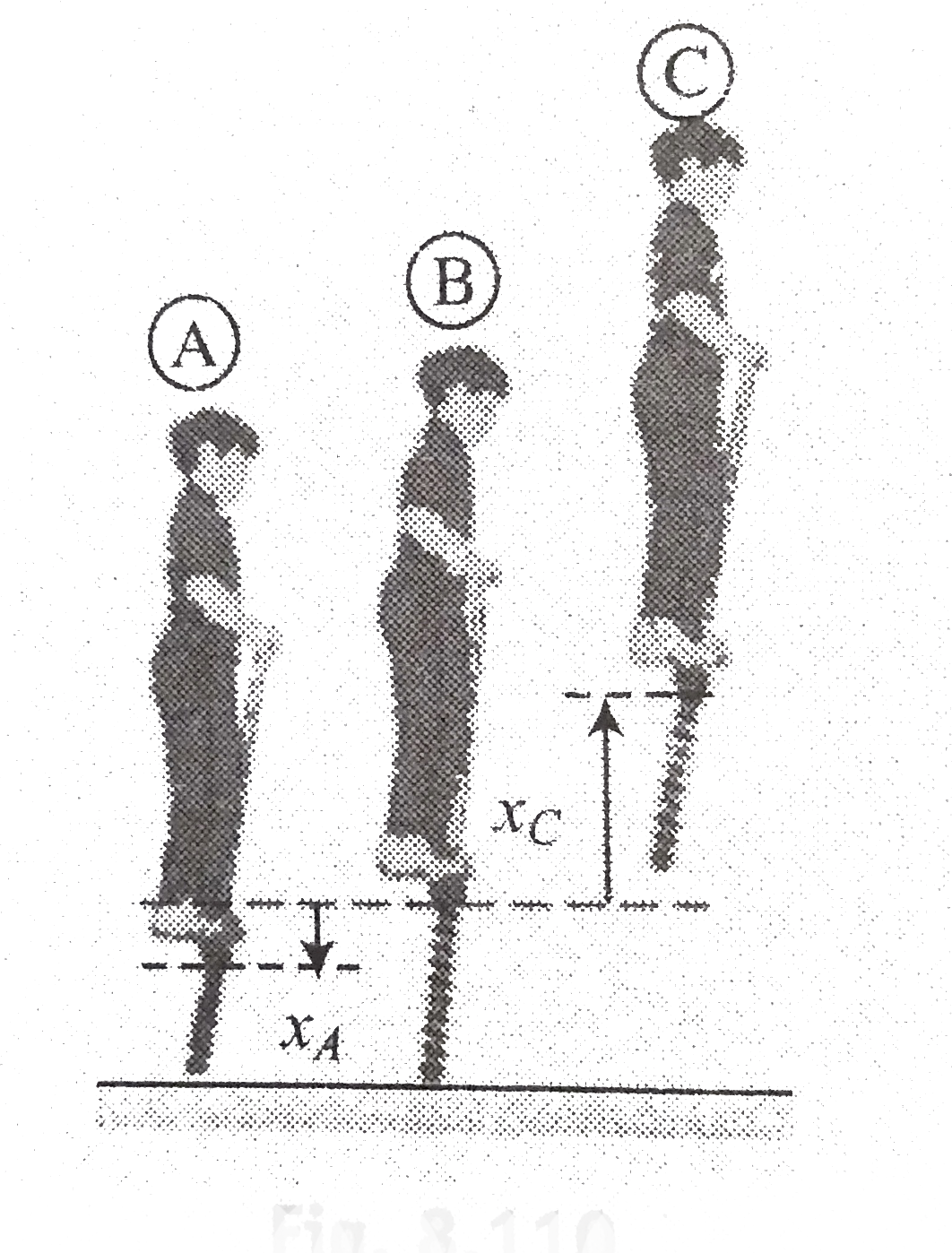 09:35View Solution
09:35View SolutionA block of mass `m` is released from point (A) in figure. The track is frictionless except for the position between points (B) and (C), which has a length of `d_(BC)`. The block travels down the track, hits a spring of force constant `k`, and compresses the spring x from its equilibrium position before coming at rest momentarily. Determine the coefficient of kinetic friction between the block and the rough surface between (B) and (C).
 03:49View Solution
03:49View SolutionIn figure, the stiffness of the spring is `k` and mass of the block is `m`. The pulley is fixed. Initially, the block `m` is held such that the elongation in the spring is zero and then released from rest. Find:
a. the maximum elongation in the spring.
b. the maximum speed of the block `m`. Neglect the mass of the spring and that of the string. Also neglect the friction.
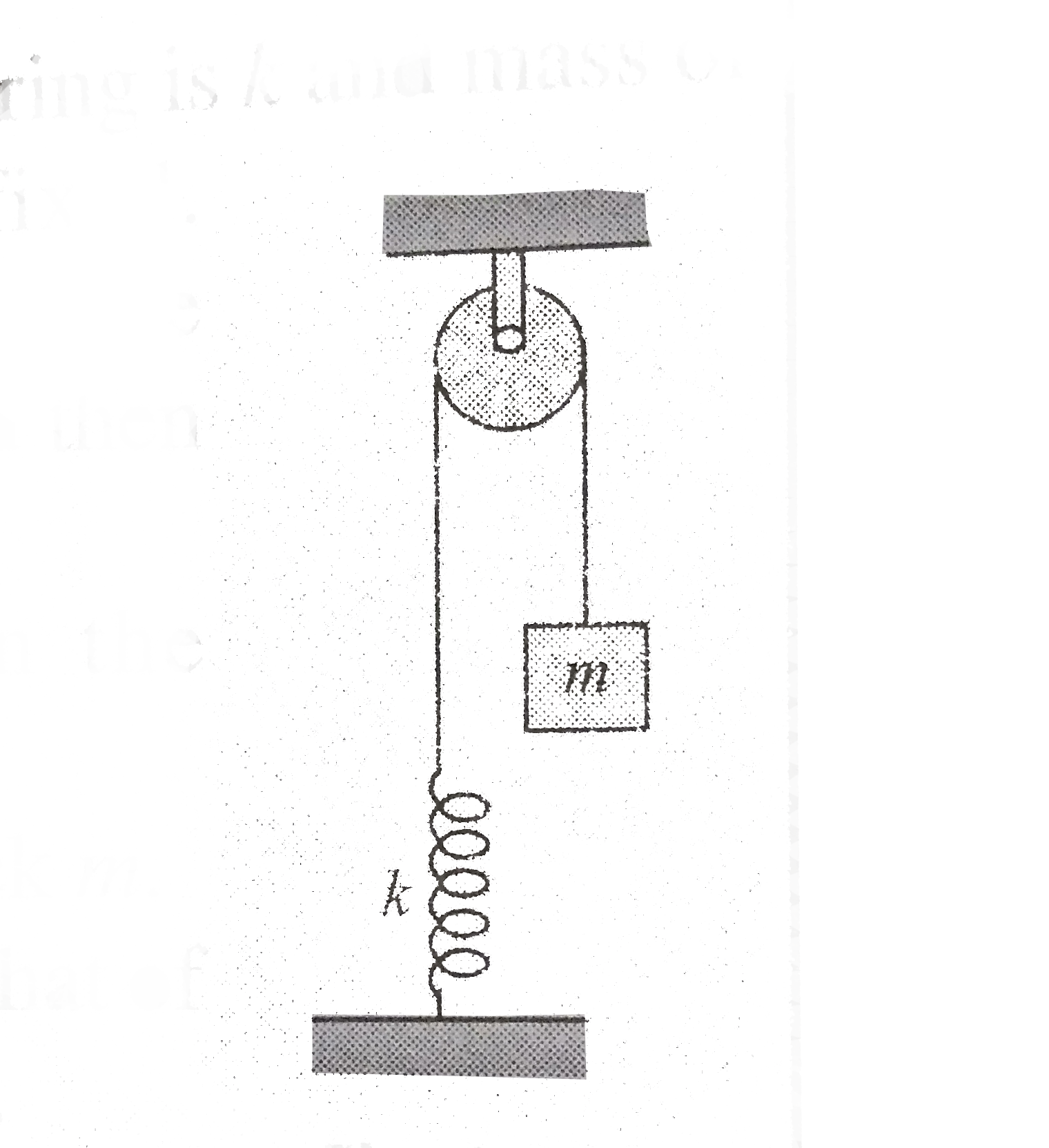 05:29View Solution
05:29View SolutionA child slides without friction from a height `h` along a curved water slide (figure). She is launched from a height `h//5` into the pool. Determine her maximum airbone height `y` in terms of `h` and `theta`.
 05:47View Solution
05:47View SolutionA spring-mass system ( `m_1` + massless spring + `m_2`) fall freely from a height `h` before `m_2` colliding inelastically with the ground. Find the maximum value of `h` so that block `m_2` will break off the surface. Assume k=stiffness of the spring.
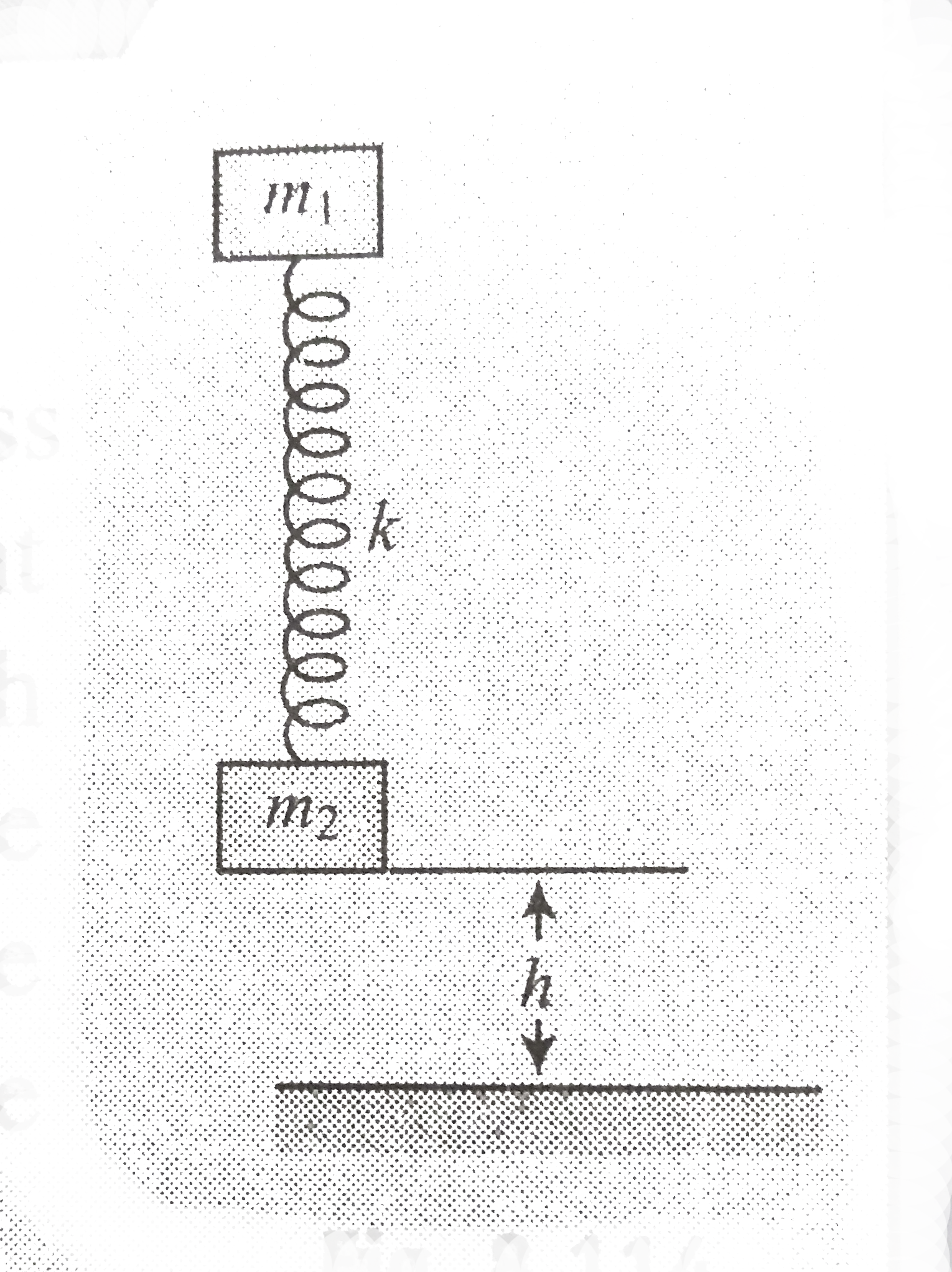 02:44View Solution
02:44View SolutionA ring of mass `m=10kg` can slide through a vertical rod with friction. It is connected with a spring of force constant `k=100Nm^-1`. The relaxed length of spring is `4m`. The ring is displaced `3m` as shown in the figure and released. Find velocity of ring when spring becomes horizontal.
 02:31View Solution
02:31View Solution
Exercise 8.3 questions and complete solutions for chapter WORK, POWER & ENERGY of CENGAGE PHYSICS (ENGLISH) of Class 11
